“Appalachia was not different from the rest of America; it was in fact a mirror of what the nation was becoming.”
Ron Eller, Uneven Ground
As Appalachians, our values include the love of our land, strong family ties, faith, and strong sense of justice. But to know Appalachia from much contemporary media and literature is to be faced with wild stereotypes and inaccuracies. Together with our partners, we crowdsourced the best books about Appalachia, from history to the arts, from poetry to academia. We hope you learn, cherish, and enjoy. We’ve divided our list into sections, presented in alphabetical order by author:
Non-Fiction
Fiction
Memoirs
Graphic Novels
Poetry
Have a book that you think we should share with a wider audience?
Get in touch- email us at reimagine.appalachia@gmail.com.
Want more? Visit our friends at Read Appalachia! Read Appalachia is for Appalachian people to have a resource. It’s also for other folks to realize that Appalachian literature is so broad.
We also recommend buying these books from your local book store!
Appalachian Pride Month

Tar Hollow Trans (2023) by Stacy Jane Grover
In Tar Hollow Trans, Grover explores her transgender experience through common Appalachian cultural traditions. In “Dead Furrows,” a death vigil and funeral leads to an investigation of Appalachian funerary rituals and their failure to help Grover cope with the grief of being denied her transness. “Homeplace” threads family interactions with farm animals and Grover’s coming out journey, illuminating the disturbing parallels between the American Veterinary Association’s guidelines for ethical euthanasia and the World Professional Association for Transgender Health’s guidelines for transgender care.
Together, her essays write transgender experience into broader cultural narratives beyond transition and interrogate the failures of concepts such as memory, metaphor, heritage, and tradition. Tar Hollow Trans investigates the ways the labels of transgender and Appalachian have been created and understood and reckons with the ways the ever-becoming transgender self, like a stigmatized region, can find new spaces of growth.
Loving Mountains, Loving Men (2005 ) by Jeff Man
Appalachians are known for their love of place, yet many LGBTQ+ people from the mountains flee to urban areas in search of community and broader acceptance. Jeff Mann tells his story as one who left and then returned, who insists on claiming and celebrating both regional and sexual identities.
In memoir and poetry, Mann describes his life as an openly gay man who has remained true to his mountain roots. Mann recounts his upbringing in Hinton, a small town in southern West Virginia, as well as his realization of his homosexuality, his early encounters with homophobia, his coterie of supportive lesbian friends, and his initial attempts to escape his native region in hopes of finding a freer life in urban gay communities. Mann depicts his difficult search for a romantic relationship, the family members who have given him the strength to defy convention, his anger against religious intolerance and the violence of homophobia, and his love for the rich folk culture of the Highland South.


LGBTQ Fiction and Poetry from Appalachia (2019 ) By Jeff Man and Julia Watts
This collection, the first of its kind, gathers original and previously published fiction and poetry from lesbian, gay, bisexual, transgender, and queer authors from Appalachia. Like much Appalachian literature, these works are pervaded with an attachment to family and the mountain landscape, yet balancing queer and Appalachian identities is an undertaking fraught with conflict. This collection confronts the problematic and complex intersections of place, family, sexuality, gender, and religion with which LGBTQ Appalachians often grapple.
With works by established writers such as Dorothy Allison, Silas House, Ann Pancake, Fenton Johnson, and Nickole Brown and emerging writers such as Savannah Sipple, Rahul Mehta, Mesha Maren, and Jonathan Corcoran, this collection celebrates a literary canon made up of writers who give voice to what it means to be Appalachian and LGBTQ.
Storytelling in Queer Appalachia (2021) by Hillery Glasby, Sherrie Gradin, and Rachael Ryerson
In one of the first collections of scholarship at the intersection of LGBTQ studies and Appalachian studies, voices from the region’s valleys, hollers, mountains, and campuses blend personal stories with scholarly and creative examinations of living and surviving as queers in Appalachia. The essayists collected in Storytelling in Queer Appalachia are academics, social workers, riot grrrl activists, teachers, students, practitioners, scholars of divinity, and boundary crossers, all imagining how to make legible the unspeakable other of Appalachian queerness.
Focusing especially on disciplinary approaches from rhetoric and composition, the volume explores sexual identities in rural places, community and individual meaning-making among the Appalachian diaspora, the storytelling infrastructure of queer Appalachia, and the role of the metronormative in discourses of difference. Storytelling in Queer Appalachia affirms queer people, fights for queer visibility over queer erasure, seeks intersectional understanding, and imagines radically embodied queer selves through social media


Looking for Sheville (2011) by Matt McEire
“Looking for Sheville is a coming out story and a very personal look at the early formation of the lesbian community in the small Southern Appalachian city of Asheville, North Carolina, during the 1970’s. Matty, an aspiring singer-songwriter with a predilection for stage fright, finds her way into the clandestine gay subculture through the only gay bar in town, a dark, back-alle hole in-the-wall in a seedy part of town. From this inauspicious beginning, she finds other lesbians, starts to discover the wider lesbian culture, and joins with other like-minded women to create lesbian community. Matty travels to other cities and expands her horizons. She and her friends explore all that lesbian culture has to offer-literature, Women’s Music, spirituality, conferences, festivals, marches, softball, politics, and more. If you were part of the lesbian world of the 1970’s, Matty’s story will resonate poignantly because this is your story, too.
Matty McEire is a writer and singer-songwriter who works in a college library to make ends meet and support her creative cravings. She resides in Asheville, North Carolina, with her greyhound, surrounded by books, music, and good friends.”
Sweeter Voices Still (2021) by Ryan Schuessler and Kevin Whiteneir, Jr.
The middle of America―the Midwest, Appalachia, the Rust Belt, the Great Plains, the Upper South―is a queer place, and it always has been. The queer people of its cities, farms, and suburbs can’t be reduced to just “blue dots” within “red states.” Every story about a kid from Iowa who steps off the bus in Manhattan, ready to “finally” live, is a story about a kid who was already living in Iowa. Sweeter Voices Still is a collection full of stories about that kid, written by people just like them.
This collection, edited by Ryan Schuessler (The St. Louis Anthology) and Kevin Whiteneir, Jr., features queer voices you might recognize―established and successful writers and thinkers like Aaron Foley and Jeffery Bean―and others you might not. You’ll find sex, love, and heartbreak and all the other beings we meet along the way: trees, deer, cicadas, sturgeon. Most of all, you’ll find real people.


Another Appalachia: Coming Up Queer and Indian in a Mountain Place (2022) by Neema Abashia
When Neema Avashia tells people where she’s from, their response is nearly always a disbelieving, “There are Indian people in West Virginia?” A queer Asian American teacher and writer, Avashia fits few Appalachian stereotypes. But the lessons she learned in childhood about race and class, gender and sexuality, continue to inform the way she moves through the world today: how she loves, how she teaches, how she advocates, how she struggles.
Another Appalachia examines both the roots and the resonance of Avashia’s identity as a queer, desi, Appalachian woman, while encouraging readers to envision more complex versions of both Appalachia and the nation as a whole. With lyric and narrative explorations of foodways, religion, sports, standards of beauty, social media, gun culture, and more, Another Appalachia mixes nostalgia and humor, sadness and sweetness, personal reflection and universal questions.
Y’all Means All: The Emerging Voices Queering Appalachia (2022) By Zane McNeill
Y’all Means All is a celebration of the weird and wonderful aspects of a troubled region in all of their manifest glory! This collection is a thought-provoking hoot and a holler of “we’re queer and we’re here to stay, cause we’re every bit a piece of the landscape as the rocks and the trees” echoing through the hills of Appalachia and into the boardrooms of every media outlet and opportunistic author seeking to define Appalachia from the outside for their own political agendas. Multidisciplinary and multi-genre, Y’all necessarily incorporates elements of critical theory, such as critical race theory and queer theory, while dealing with a multitude of methodologies, from quantitative analysis, to oral history and autoethnography.
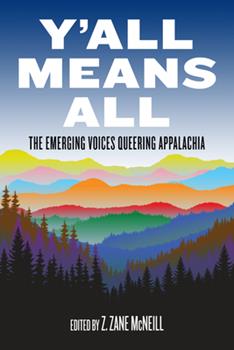

Bastard Out of Carolina (1993) by Dorothy Allison
Greenville County, South Carolina, a wild, lush place, is home to the Boatwright family—rough-hewn men who drink hard and shoot up each other’s trucks, and indomitable women who marry young and age all too quickly. At the heart of this astonishing novel is Ruth Anne Boatwright, known simply as Bone, a South Carolina bastard with an annotated birth certificate to tell the tale. Observing everything with the mercilessly keen eye of a child, Bone finds herself caught in a family triangle that will test the loyalty of her mother, Anney. Her stepfather, Daddy Glen, calls Bone “cold as death, mean as a snake, and twice as twisty,” yet Anney needs Glen. At first gentle with Bone, Daddy Glen becomes steadily colder and more furious—until their final, harrowing encounter, from which there can be no turning back.
Non-Fiction
Strong as Ironweed: Appalachian Women and the Fight for Environmental Justice (2013) by Shannon Bell
Motivated by a deeply rooted sense of place and community, Appalachian women have long fought against the damaging effects of industrialization. In this collection of interviews, sociologist Shannon Elizabeth Bell presents the voices of twelve Central Appalachian women, environmental justice activists fighting against mountaintop removal mining and its devastating effects on public health, regional ecology, and community well-being. Each woman narrates her own personal story of injustice and tells how that experience led her to activism. The interviews–a number of them illustrated by the women’s “photostories”–describe obstacles, lawsuits, and tragedies. But they also tell of new communities and personal transformations catalyzed through activism. Bell supplements each narrative with careful notes that aid the reader while amplifying the power and flow of the activists’ stories.


What You Are Getting Wrong about Appalachia (2018) by Elizabeth Catte
Called “the most damning critique of Hillbilly Elegy,” this book also comes highly recommended! In 2016, headlines declared Appalachia ground zero for America’s “forgotten tribe” of white working-class voters. Journalists flocked to the region to extract sympathetic profiles of families devastated by poverty, abandoned by establishment politics, and eager to consume cheap campaign promises. What You Are Getting Wrong About Appalachia is a frank assessment of America’s recent fascination with the people and problems of the region.
55 Strong: Inside the West Virginia Teachers’ Strike (2018) by Elizabeth Catte (Editor), Jessica Salfia (Editor)
On February 22, 2018, nearly 20,000 West Virginia teachers, bus drivers, and service personnel walked out on their jobs in solidarity. After thirteen hard days, the workers, largely women, won higher pay and better benefits. Beyond that, the strike sparked a revolution in education across the United States. The book includes essays by teachers from around the state, images from the picket lines, organizing documents, and material on the history of the labor movement in West Virginia.


Life, Work, and Rebellion in the Coalfields (2015) by David Corbin
Between 1880 and 1922, the coal fields of southern West Virginia witnessed two bloody and protracted strikes, the formation of two competing unions, and the largest armed conflict in American labor history—a week-long battle between 20,000 coal miners and 5,000 state police, deputy sheriffs, and mine guards. These events resulted in an untold number of deaths, indictments of over 550 coal miners for insurrection and treason, and four declarations of martial law. Corbin argues that these violent events were collective and militant acts of aggression interconnected and conditioned by decades of oppression. His study goes a long way toward breaking down the old stereotypes of Appalachian and coal mining culture.
Uneven Ground (2013) by Ron Eller
This non-fiction book was our partners’ top recommendation: “if you only get one book to understand Appalachia, read this one.”
This book explores Appalachia’s struggle to overcome poverty, to live in harmony with the land, and to respect the diversity of cultures and the value of community as the quintessential American story. In the end, Eller concludes, “Appalachia was not different from the rest of America; it was in fact a mirror of what the nation was becoming.”


Miners, Millhands, and Mountaineers (1982) by Ron Eller
Receiving the award for Outstanding Writing about Appalachia, this book examines the social and economic history of the Appalachian South from 1880 to 1930, describing the revolutionary changes in mountain life as the region was swept up in the American drive toward industrial maturity.
Fighting Back in Appalachia Traditions of Resistance and Change (1993) by Steven Fisher
Sixteen original essays document the extent and variety of citizen resistance and struggle in the Appalachian region since 1960. The contributors-all organizers or activist intellectuals-describe how and why some of the dramatic Appalachian resistance efforts and strategies have arisen.
“Transforming Places: Lessons from Appalachia, What global activists can learn from Appalachia” (2013) by Steven Fisher is a “sequel” to History of Fighting Back.


Smokestacks in the Hills (2015) by Lou Martin
Long considered an urban phenomenon, industrialization also transformed the American countryside. Lou Martin weaves the narrative of how the relocation of steel and pottery factories to Hancock County, West Virginia, created a rural and small-town working class–and what that meant for communities and for labor.
As Martin shows, access to land in and around steel and pottery towns allowed residents to preserve rural habits and culture. Workers in these places valued place and local community. Because of their belief in localism, an individualistic ethic of “making do,” and company loyalty, they often worked to place limits on union influence. At the same time, this localism allowed workers to adapt to the dictates of industrial capitalism and a continually changing world on their own terms–and retain rural ways to a degree unknown among their urbanized peers. Throughout, Martin ties these themes to illuminating discussions of capital mobility, the ways in which changing work experiences defined gender roles, and the persistent myth that modernizing forces bulldozed docile local cultures.
Culture, Class, and Politics in Modern Appalachia (2009) by Ronald L. Lewis
Culture, Class and Politics in Modern Appalachia takes stock of the field of Appalachian studies as it explores issues still at the center of its scholarship: culture, industrialization, the labor movement, and twentieth-century economic and political failure and their social impact. A new generation of scholars continues the work of Appalachian studies’ pioneers, exploring the diversity and complexity of the region and its people. Labor migrations from around the world transformed the region during its critical period of economic growth. Collective struggles over occupational health and safety, the environment, equal rights, and civil rights challenged longstanding stereotypes. Investigations of political and economic power and the role of social actors and social movements in Appalachian history add to the foundational work that demonstrates a dynamic and diverse region.

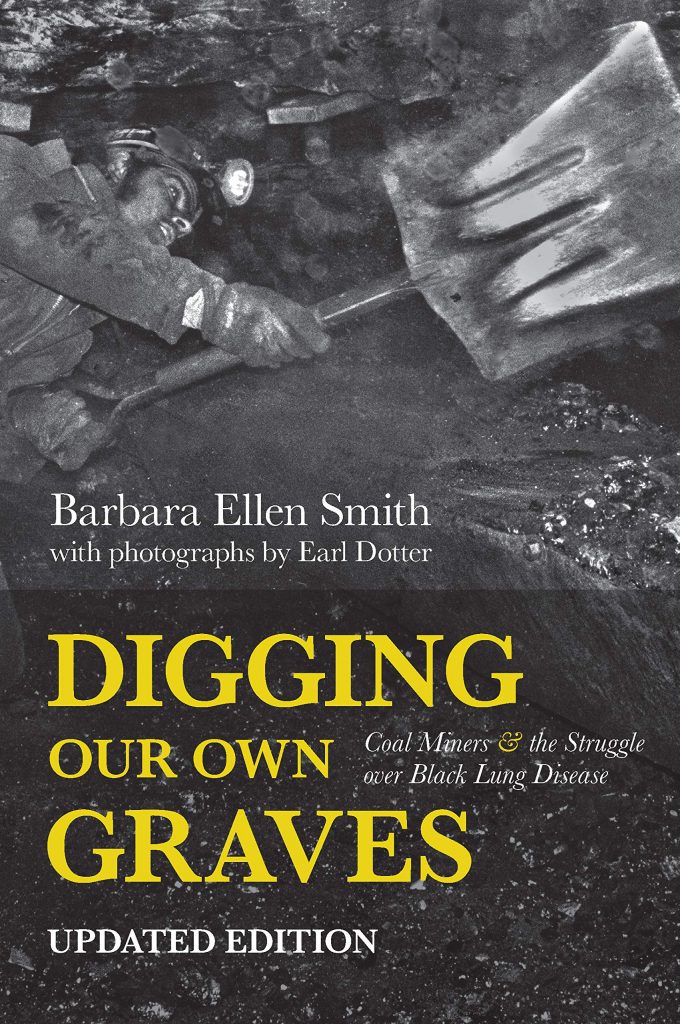
Digging Our Own Graves: Coal Miners and the Struggle over Black Lung Disease (2020) by Barbara Ellen Smith
Employment and production in the Appalachian coal industry have plummeted over recent decades. But the lethal black lung disease, once thought to be near-eliminated, affects miners at rates never before recorded.
Digging Our Own Graves sets this epidemic in the context of the brutal assault, begun in the 1980s and continued since, on the United Mine Workers of America and the collective power of rank-and-file coal miners in the heart of the Appalachian coalfields. Barbara Ellen Smith ‘s essential study, now with an updated introduction and conclusion, charts the struggles of miners and their families from the birth of the Black Lung Movement in 1968 to the present-day importance of demands for environmental justice through proposals like the Green New Deal. Through extensive interviews with participants and her own experiences as an activist, the author provides a vivid portrait of communities struggling for survival against the corporate extraction of labor, mineral wealth, and the very breath of those it sends to dig their own graves.
A Union for Appalachia Healthcare Workers: The Radical Roots and Hard Fights of Local 1199 (2021) By John Hennen
With a multiracial, largely female, and notably militant membership, the 1199 union was at labor’s vanguard in the 1970s, and Hennen traces its efforts in hospitals, nursing homes, and healthcare centers in Appalachia. He places these stories of mainly low-wage women workers within the framework of shake-ups in the late industrial and early post-industrial United States.


Belonging: A Culture of Place (2009) by bell hooks
Traversing past and present, Belonging charts a cyclical journey in which hooks moves from place to place, from country to city and back again, only to end where she began–her old Kentucky home. In this book she turns her attention to focus on issues of land and land ownership. Reflecting on the fact that 90% of all black people lived in the agrarian South before mass migration to northern cities in the early 1900s, she writes about black farmers, about black folks who have been committed both in the past and in the present to local food production, to being organic, and to finding solace in nature. Naturally, it would be impossible to contemplate these issues without thinking about the politics of race and class. Reflecting on the racism that continues to find expression in the world of real estate, she writes about segregation in housing and economic racialized zoning. In these critical essays, hooks finds surprising connections that link the environment and sustainability to the politics of race and class that reach far beyond Kentucky.
Harlan Renaissance (2021) by William H. Turner
The Harlan Renaissance is an intimate remembrance of kinship and community in eastern Kentucky’s coal towns written by one of the luminaries of Appalachian studies, William Turner. Turner reconstructs Black life in the company towns in and around Harlan County during coal’s final postwar boom years, which built toward an enduring bust as the children of Black miners, like the author, left the region in search of better opportunities. The Harlan Renaissance invites readers into what might be an unfamiliar Appalachia: one studded by large and vibrant Black communities, where families took the pulse of the nation through magazines like Jet and Ebony and through the news that traveled within Black churches, schools, and restaurants. Difficult choices for the future were made as parents considered the unpredictable nature of Appalachia’s economic realities alongside the unpredictable nature of a national movement toward civil rights.

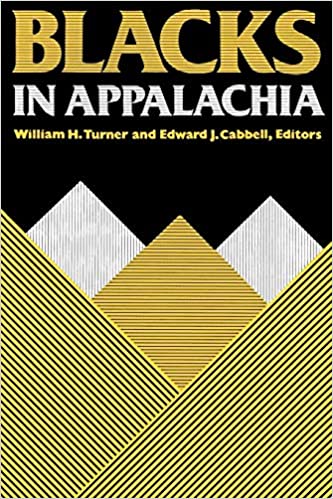
Blacks in Appalachia (1985) by William H. Turner and Edward J. Cabbell
A groundbreaking, seminal work. Although southern Appalachia is popularly seen as a purely white enclave, Blacks have lived in the region from early times. Some hollows and coal camps are in fact almost exclusively black settlements. The selected readings in this new book offer the first comprehensive presentation of the Black experience in Appalachia.
To Move a Mountain: Fighting the Global Economy in Appalachia (2004) by Eve S. Weinbaum
To Move a Mountain is an inspirational account of how a group of Appalachian men and women, politicized by the disaster of local plant closings, became unlikely activists in the Tennessee statehouse and the 1999 World Trade Organization protests in Seattle.
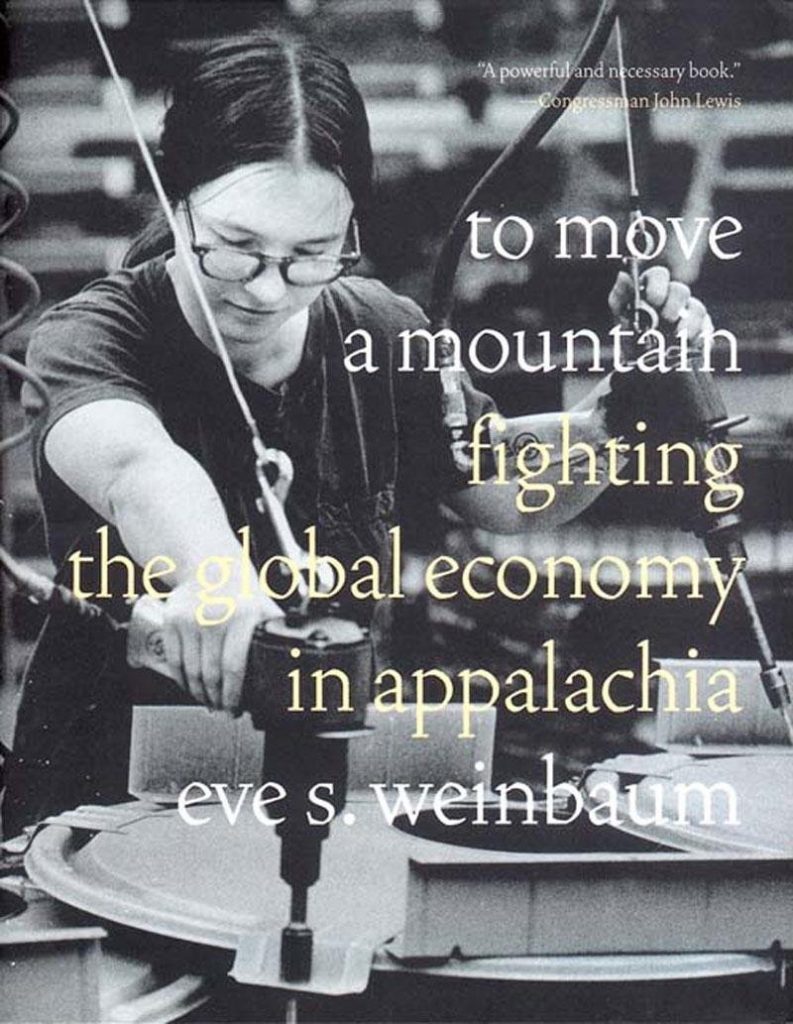

To Live Here, You Have to Fight – How Women Led Appalachian Movements for Social Justice (2019) by Jessica Wilkerson
Inspiring yet sobering, this book reveals Appalachian women as the indomitable caregivers of a region–and overlooked actors in the movements that defined their time.
Appalachian Reckoning: A Region Responds to Hillbilly Elegy (2020) Edited by Anthony Harkins and Meredith McCarroll
Appalachian Reckoning is a retort, at turns rigorous, critical, angry, and hopeful, to the long shadow Hillbilly Elegy has cast over the region and its imagining. But it also moves beyond Hillbilly Elegy to allow Appalachians from varied backgrounds to tell their own diverse and complex stories through an imaginative blend of scholarship, prose, poetry, and photography. The essays and creative work collected in Appalachian Reckoning provide a deeply personal portrait of a place that is at once culturally rich and economically distressed, unique and typically American. Complicating simplistic visions that associate the region almost exclusively with death and decay, Appalachian Reckoning makes clear Appalachia’s intellectual vitality, spiritual richness, and progressive possibilities.


Matewan: Before the Massacre (2008) by Rebecca J. Bailey
On May 19, 1920, gunshots rang through the streets of Matewan, West Virginia, in an event soon known as the “Matewan Massacre.” Most historians of West Virginia and Appalachia see this event as the beginning of a long series of tribulations known as the second Mine Wars. But was it instead the culmination of an even longer series of proceedings that unfolded in Mingo County, dating back at least to the Civil War. Matewan Before the Massacre provides the first comprehensive history of the area, beginning in the late eighteenth century continuing up to the Massacre. It covers the relevant economic history, including the development of the coal mine industry and the struggles over land ownership; labor history, including early efforts of unionization; transportation history, including the role of the N&W Railroad; political history, including the role of political factions in the county’s two major communities—Matewan and Williamson; and the impact of the state’s governors and legislatures on Mingo County.
They Say in Harlan County (2010) by Alessandro Portelli.
Considered by many the world’s leading oral historian, Portelli draws on 25 years of interviews to take readers into mining communities and inside the lives of those who work, suffer, celebrate and die in them. “Portelli uncovers the whole history and memory of the United States in this one symbolic place, through settlement, slavery, civil war, industrialization, immigration, labor conflict, technological change, environmental and social crisis, and resistance.


Pathways to Our Sustainable Future- A Global Perspective from Pittsburgh (2017) by Patricia DeMarco, Ph.D
Pathways to a Sustainable Future shows how Pittsburgh is addressing the issues of climate change and global pollution. The solutions are not necessarily found in technology alone. Rather, the pathways forward are based on the ethical and moral basis for making choices about the future.
The first part of the book addresses the essential connection between people and the earth, its living systems, and how people can re-connect with the natural world. The second part addresses some innovations to providing energy, food and materials. It explores the policies embedded in the current system and some of the new directions to achieve change. The third part examines the social and cultural impediments to change and the means to address them.
This is a book of empowerment, inspired by Rachel Carson whose one voice rose in challenge to a system that presented danger to living systems and moved thousands to respond.
Amity and Prosperity (2018) by Eliza Griswold
In Amity and Prosperity, the prizewinning poet and journalist Eliza Griswold tells the story of the energy boom’s impact on a small town at the edge of Appalachia and one woman’s transformation from a struggling single parent to an unlikely activist.


The Bootleg Coal Rebellion: The Pennsylvania Miners Who Seized an Industry (2022) by Mitch Troutman
Told with great intimacy and compassion, The Bootleg Coal Rebellion uncovers a long-buried history of resistance and resilience among depression-era miners in Pennsylvania, who sank their own mines on company grounds and fought police, bankers, coal companies, and courts to form a union that would not only safeguard their livelihoods but also protect their collective autonomy as citizens and workers for decades. Community and labor organizer Mitch Troutman brings this explosive and accessible American tale to life through the bootleggers’ own words. Activists, scholars, and organizers will celebrate this story of the people who literally seized mountains and stood their ground to create the equalization movement, the miners’ union democracy movement, and the Communist-led Unemployed Councils of the anthracite region. This epic story of work, love, and community stands as a testament to the power of collective action; a story that is sorely needed as communities today rise to confront neoliberal policies ravaging our planet.
There is Power in a Union: The Epic Story of Labor in America (2011) by Philip Dray
From the nineteenth-century textile mills of Lowell, Massachusetts, to the triumph of unions in the twentieth century and their waning influence today, the contest between labor and capital for the American bounty has shaped our national experience.
In this stirring new history, Philip Dray shows us the vital accomplishments of organized labor and illuminates its central role in our social, political, economic, and cultural evolution. His epic, character-driven narrative not only restores to our collective memory the indelible story of American labor, it also demonstrates the importance of the fight for fairness and economic democracy, and why that effort remains so urgent today.


Knocking on Labor’s Door: Union Organizing in the 1970s and the Roots of a New Economic Divide (2017) by Lane Windham
The power of unions in workers’ lives and in the American political system has declined dramatically since the 1970s. In recent years, many have argued that the crisis took root when unions stopped reaching out to workers and workers turned away from unions. But here Lane Windham tells a different story. Highlighting the integral, often-overlooked contributions of women, people of color, young workers, and southerners, Windham reveals how in the 1970s workers combined old working-class tools–like unions and labor law–with legislative gains from the civil and women’s rights movements to help shore up their prospects. Through close-up studies of workers’ campaigns in shipbuilding, textiles, retail, and service, Windham overturns widely held myths about labor’s decline, showing instead how employers united to manipulate weak labor law and quash a new wave of worker organizing.
Stayin’ Alive: The 1970s and the Last Days of the Working Class (2012) by Jefferson Cowie
A wide-ranging cultural and political history that will forever redefine a misunderstood decade, Stayin’ Alive is prizewinning historian Jefferson Cowie’s remarkable account of how working-class America hit the rocks in the political and economic upheavals of the 1970s. In this edgy and incisive book—part political intrigue, part labor history, with large doses of American music, film and television lore—Cowie, with “an ear for the power and poetry of vernacular speech” (Cleveland Plain Dealer), reveals America’s fascinating path from rising incomes and optimism of the New Deal to the widening economic inequalities and dampened expectations of the present.


Silent Spring (1962) by Rachel Carson
Silent Spring began with a “fable for tomorrow” – a true story using a composite of examples drawn from many real communities where the use of DDT had caused damage to wildlife, birds, bees, agricultural animals, domestic pets, and even humans. Carson used it as an introduction to a very scientifically complicated and already controversial subject. This “fable” made an indelible impression on readers and was used by critics to charge that Carson was a fiction writer and not a scientist.
Silent Spring inspired the modern environmental movement, which began in earnest a decade later. It is recognized as the environmental text that “changed the world.” She aimed at igniting a democratic activist movement that would not only question the direction of science and technology but would also demand answers and accountability. Rachel Carson was a prophetic voice and her “witness for nature” is even more relevant and needed if our planet is to survive into a 22nd century.
Fiction

Demon Copperhead (2022) by Barbara Kingsolver
Set in the mountains of southern Appalachia, this is the story of a boy born to a teenaged single mother in a single-wide trailer, with no assets beyond his dead father’s good looks and copper-colored hair, a caustic wit, and a fierce talent for survival. In a plot that never pauses for breath, relayed in his own unsparing voice, he braves the modern perils of foster care, child labor, derelict schools, athletic success, addiction, disastrous loves, and crushing losses. Through all of it, he reckons with his own invisibility in a popular culture where even the superheroes have abandoned rural people in favor of cities.
Storming Heaven (1988) by Denise Giardina
If you are looking for a fiction book, one of our partners recommends reading Storming Heaven by Denise Giardina. The characters all bear witness to nearly forgotten events of labor history, culminating in the final, tragic Battle of Blair Mountain. “I used to require all my interns to read it!” says one of our partners.
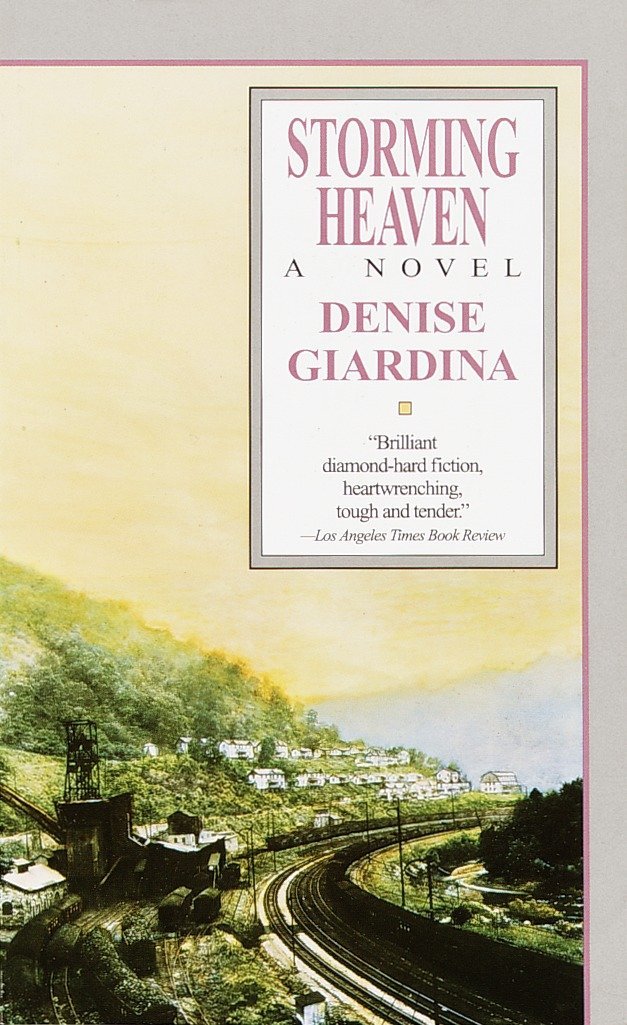

The Book Woman of Troublesome Creek (2019) by Kim Michele Richardson
The hardscrabble folks of Troublesome Creek have to scrap for everything—everything except books, that is. Thanks to Roosevelt’s Kentucky Pack Horse Library Project, Troublesome’s got its very own traveling librarian, Cussy Mary Carter. Inspired by the true blue-skinned people of Kentucky and the brave and dedicated Kentucky Pack Horse library service of the 1930s, The Book Woman of Troublesome Creek is a story of raw courage, fierce strength, and one woman’s belief that books can carry us anywhere—even back home. Our partner says “this should be required reading in every high school.”
The Stories of Breece D’J Pancake (2013) by Breece D’J Pancake
Breece D’J Pancake cut short a promising career when he took his own life at the age twenty-six. Published posthumously, this is a collection of stories that depict the world of Pancake’s native rural West Virginia.


Prodigal Summer (2001) by Barbara Kingsolver
Prodigal Summer weaves together three stories of human love within a larger tapestry of lives inhabiting the forested mountains and struggling small farms of southern Appalachia.
From her outpost in an isolated mountain cabin, Deanna Wolfe, a reclusive wildlife biologist, watches a den of coyotes that have recently migrated into the region. She is caught off-guard by a young hunter who invades her most private spaces and confounds her self-assured, solitary life. On a farm several miles down the mountain, Lusa Maluf Landowski, a bookish city girl turned farmer’s wife, finds herself unexpectedly marooned in a strange place where she must declare or lose her attachment to the land that has become her own. And a few more miles down the road, a pair of elderly feuding neighbors tend their respective farms and wrangle about God, pesticides, and the possibilities of a future neither of them expected.
Over the course of one humid summer, these characters find their connections to one another and to the flora and fauna with whom they share a place. Prodigal Summer demonstrates a balance of narrative, drama and ideas that is characteristic of Barbara Kingsolver’s finest work.
Memoirs

Bone Black: Memories of Girlhood (1997) by bell hooks
This memoir shows the unfolding of female creativity and one strong-spirited child’s journey toward becoming a writer. She learns early on the roles women and men play in society, as well as the emotional vulnerability of children. She sheds new light on a society that beholds the joys of marriage for men and condemns anything more than silence for women. In this world, too, black is a woman’s color—worn when earned—daughters and daddies are strangers under the same roof, and crying children are often given something to cry about. hooks finds comfort in solitude, good company in books. She also discovers, in the motionless body of misunderstanding, that writing is her most vital breath.
At Home in the Heart of Appalachia (2002) by John O’Brien
John O’Brien was raised in Philadelphia by an Appalachian father who fled the mountains to escape crippling poverty and family tragedy. Years later, with a wife and two kids of his own, the son moved back into those mountains in an attempt to understand both himself and the father from whom he’d become estranged.
At once a poignant memoir and a tribute to America’s most misunderstood region, At Home in the Heart of Appalachia describes a lush land of voluptuous summers, woodsmoke winters, and breathtaking autumns and springs. John O’Brien sees through the myths about Appalachia to its people and the mountain culture that has sustained them. And he takes to task naïve missionaries and rapacious industrialists who are the real source of much of the region’s woe as well as its lingering hillbilly stereotypes. Finally, and profoundly, he comes to terms with the atavistic demons that haunt the relations between Appalachian fathers and sons.


Black Days, Black Dust: The Memories of an African American Coal Miner (2002) by Robert Armstead
Among those drawn to jobs in the booming West Virginia coal mines during the first part of the twentieth century were thousands of African Americans. They proved successful in this industry—despite low wages and discrimination at the hands of mine operators. This book, the first published memoir by an African American coal miner, is a stirring tale of survival and achievement. Bob Armstead interweaves stories of family and community with a broad history of underground mining to paint an engrossing picture of the work, the dangers, and the drama of that industry.
An American Childhood (2009) by Annie Dillard
Annie Dillard remembers. She remembers the exhilaration of whipping a snowball at a car and having it hit straight on. Dillard climbs back inside her 5-, 10-, and 15-year-old selves with apparent effortlessness. The voracious young Dillard embraces headlong one fascination after another–from drawing to rocks and bugs to the French symbolists. “Everywhere, things snagged me,” she writes. “The visible world turned me curious to books; the books propelled me reeling back to the world.” From her parents she inherited a love of language–her mother’s speech was “an endlessly interesting, swerving path”–and the understanding that “you do what you do out of your private passion for the thing itself,” not for anyone else’s approval or desire. And one would be mistaken to call the energy Dillard exhibits in An American Childhood merely youthful; “still I break up through the skin of awareness a thousand times a day,” she writes, “as dolphins burst through seas, and dive again, and rise, and dive.”


Another Appalachia: Coming Up Queer and Indian in a Mountain Place (2022) by Neema Abashia
When Neema Avashia tells people where she’s from, their response is nearly always a disbelieving, “There are Indian people in West Virginia?” A queer Asian American teacher and writer, Avashia fits few Appalachian stereotypes. But the lessons she learned in childhood about race and class, gender and sexuality, continue to inform the way she moves through the world today: how she loves, how she teaches, how she advocates, how she struggles.
Another Appalachia examines both the roots and the resonance of Avashia’s identity as a queer, desi, Appalachian woman, while encouraging readers to envision more complex versions of both Appalachia and the nation as a whole. With lyric and narrative explorations of foodways, religion, sports, standards of beauty, social media, gun culture, and more, Another Appalachia mixes nostalgia and humor, sadness and sweetness, personal reflection and universal questions.
Graphic Novels

Pop: An Illustrated Novel (2021) by Robert Gipe
Pop’s Appalachia is full of clear-eyed, caring, creative, and complicated people struggling to hang on to what is best about their world and reject what is not. Their adventures reflect an Appalachia that is overrun by outside commentators looking for stories to tell about the region—sometimes positive, sometimes negative, but almost always oversimplified.
Poetry
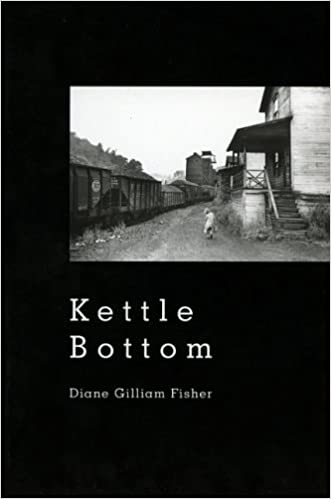
Kettle Bottom (2004) by Diane Gilliam Fisher
Based on the historical and social events of the West Virginia coal mine wars of 1920-1921, Kettle Bottom imagines the stories of miners, their wives, children, sisters, and mothers; of mountaineers, Italian immigrants, and Black families.
Appalachian Elegy, Poetry and Place, Kentucky Voices (2012) by bell hooks
In this collection, bell hooks continues her work as an imagist of life’s harsh realities in a collection of poems inspired by her childhood in the isolated hills and hidden hollows of Kentucky. At once meditative, confessional, and political, this poignant volume draws the reader deep into the experience of living in Appalachia.
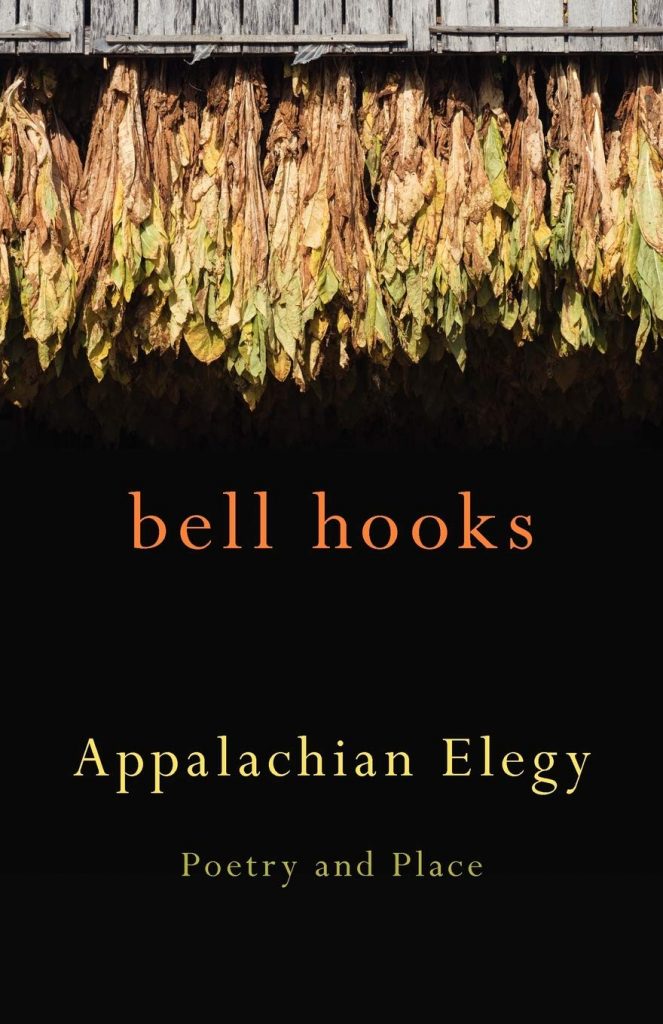

Black Bone: 25 Years of the Affrilachian Poets (2018) Edited by Bianca Lynne Spriggs and Jeremy Paden
Author Frank X Walker coined the term “Affrilachia” to give identity and voice to people of African descent from this region and to highlight Appalachia’s multicultural identity. This act inspired a group of gifted artists, the Affrilachian Poets, to begin working together and using their writing to defy persistent stereotypes of Appalachia as a racially and culturally homogenized region. This illuminating and powerful collection is a testament to a groundbreaking group and its enduring legacy.
Affrilachia: Poems (2000) by Frank X Walker
Called “a milestone book of poetry at the intersection of Appalachian and African American literature.” In this pathbreaking debut collection, poet Frank X Walker tells the story of growing up young, Black, artistic, and male in one of America’s most misunderstood geographical regions. As a proud Kentucky native, Walker created the word “Affrilachia” to render visible the unique intersectional experience of African Americans living in the rural and Appalachian South.
Since its publication in 2000, Affrilachia has seen wide classroom use, and is recognized as one of the foundational works of the Affrilachian Poets, a community of writers offering new ways to think about diversity in the Appalachian region and beyond.

Organizing

Leadership Without Easy Answers (1998) by Ronald A. Heifetz
The economy uncertain, education in decline, cities under siege, crime and poverty spiraling upward, international relations roiling: we look to leaders for solutions, and when they don’t deliver, we simply add their failure to our list of woes. In doing do, we do them and ourselves a grave disservice. We are indeed facing an unprecedented crisis of leadership, Ronald Heifetz avows, but it stems as much from our demands and expectations as from any leader’s inability to meet them. His book gets at both of these problems, offering a practical approach to leadership for those who lead as well as those who look to them for answers. Fitting the theory and practice of leadership to our extraordinary times, the book promotes a new social contract, a revitalization of our civic life just when we most need it.
